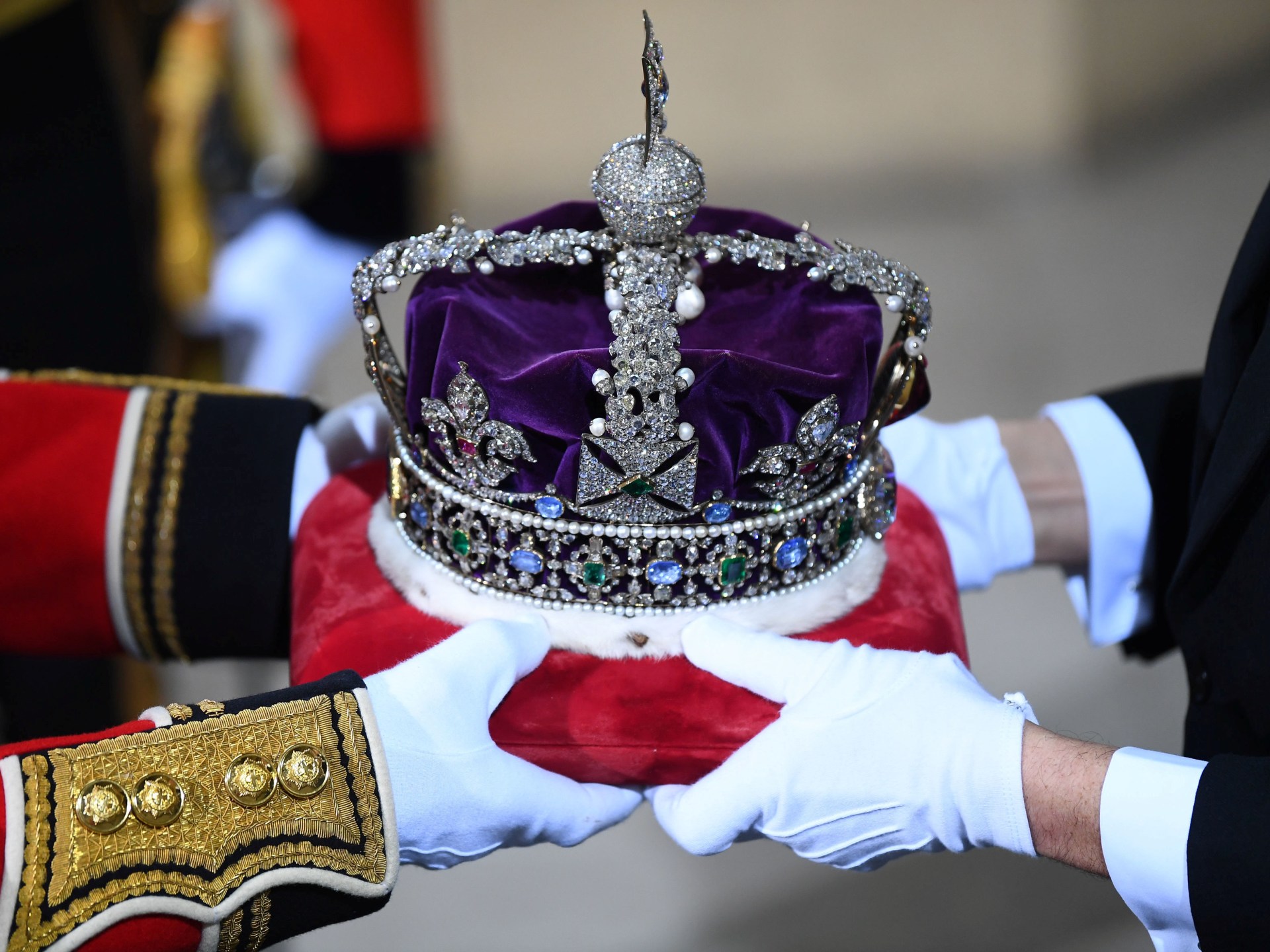The British crown jewels, inherited by British kings, have great symbolism, as they are rich in strong spiritual and temporal connotations, and their material value is great, as it is estimated at about 3 billion pounds (about 3 billion and 470 million dollars).
The Crown Jewels are being transported from their location in the Tower of London, where they are closely monitored, for use in the coronation of King Charles III, which began on Saturday.
The British Crown Jewels include a number of precious pieces and artifacts, the most prominent of which are:
imperial crown
Created for the coronation of King George VI in 1937, the Imperial State Crown was the crown that Elizabeth II wore after her coronation.
The Queen also used it on other occasions, including the official opening of Parliament sessions.
The crown weighs more than one kilogram, measures 31.5 centimeters in length, and is studded with 2,868 diamonds, 17 sapphires, 11 emeralds, 269 pearls and 4 rubies.
The new King Charles III with the Imperial State Crown (Getty Images)
scepter in the shape of a dove
Made for the coronation of Charles II in 1661, this golden scepter is topped with a dove with outstretched wings perched on a cross, symbolizing the Holy Spirit.
This scepter represents the spiritual and pastoral role of the king, and it is 110 centimeters long and weighs 1150 grams.
scepter of the cross
This scepter represents the temporal authority of the king, and it has been used in every coronation since the reign of Charles II, who was crowned in 1661, and it weighs 1170 grams and is 92 centimeters long.
In 1911, a "Kulinen A" diamond, weighing 530.2 carats, was added to it.
Because of the size of this diamond, the sceptre had to be strengthened to enable it to bear its weight.
royal ball
This globe, surmounted by a cross, symbolizes the Christian world. It consists of a hollow golden ball set with emeralds, red and blue sapphires surrounded by diamonds and two rows of pearls.
Above this ball is a cross studded with diamonds with a sapphire in the center on one side, and an emerald on the other.
During the coronation ceremonies, the ball is placed in the right hand of the king, before being thrown at the altar.
The ball is 27.5 centimeters long and weighs 1,320 grams.
The golden flask and spoon used to anoint the king's hands, chest and head (Getty Images)
The golden flask and spoon
This gold coin has the shape of an eagle with wings outstretched on the consecrated oil used during the anointing of the King.
The Archbishop of Canterbury pours oil from the eagle's head into a spoon, and anoints the King's hands, chest and head at the holiest moment of the coronation.
The shape of the eagle comes from a popular belief that the Lady Mary, peace be upon her, appeared to Saint Thomas Becket, and gave him a golden eagle and a bottle of oil intended to anoint the future kings of England.
spur
These gold coins, symbolic of chivalry, have been in use since the coronation of Richard the Lionheart in 1189. They are attached to the ankles of kings, but are only placed on the altar at the coronation of queens.
golden ring
Made for the coronation of William IV in 1831, this gold ring consists of a sapphire surrounded by diamonds and set with a sapphire to form a cross.
During the coronation ceremonies, the archbishop wears the ring on the king's ring finger as a sign of "royal dignity".
Saint Edward's Crown
Made for the coronation of Charles II, the St. Edward's Crown is the most important and revered of all, and is used only at the moment of the coronation.
This solid gold tiara set with semi-precious stones including rubies, sapphires and amethysts, and paired with a fur strap, weighs over two kilograms.

